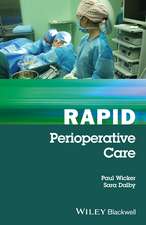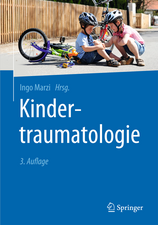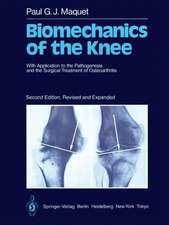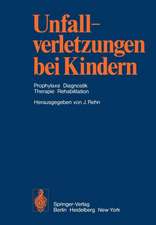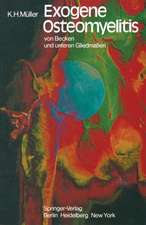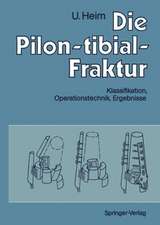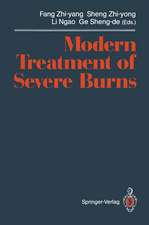Cellular Dedifferentiation and Regenerative Medicine
Autor Xiaobing Fu, Andong Zhao, Tian Huen Limba Engleză Hardback – 19 feb 2018
The book is divided into four parts, the first of which addresses the history of cell dedifferentiation and regenerative medicine. In turn, Part II compares three routes by which cells change their phenotype: dedifferentiation, transdifferentiation, and reprogramming. Part III includes an extensive review of cell dedifferentiation events in all nine body systems for lower organisms and mammalians, respectively. The final part reviews the relationship between cell dedifferentiation and the development of cancer and several other diseases, while also outlining the prospects of and future research directions in cell dedifferentiation and regenerative medicine.
The main purpose of the book is to underline the importance of cell dedifferentiation in stem cell and regenerative medicine by providing a systematical review of dedifferentiation in all body systems, together with the latest reliable evidence.
| Toate formatele și edițiile | Preț | Express |
|---|---|---|
| Paperback (1) | 980.58 lei 38-44 zile | |
| Springer Berlin, Heidelberg – 3 iun 2019 | 980.58 lei 38-44 zile | |
| Hardback (1) | 999.08 lei 38-44 zile | |
| Springer Berlin, Heidelberg – 19 feb 2018 | 999.08 lei 38-44 zile |
Preț: 999.08 lei
Preț vechi: 1051.66 lei
-5% Nou
Puncte Express: 1499
Preț estimativ în valută:
191.20€ • 197.52$ • 159.13£
191.20€ • 197.52$ • 159.13£
Carte tipărită la comandă
Livrare economică 22-28 martie
Preluare comenzi: 021 569.72.76
Specificații
ISBN-13: 9783662561775
ISBN-10: 3662561778
Pagini: 326
Ilustrații: XII, 291 p. 27 illus., 21 illus. in color.
Dimensiuni: 155 x 235 mm
Greutate: 0 kg
Ediția:1st ed. 2018
Editura: Springer Berlin, Heidelberg
Colecția Springer
Locul publicării:Berlin, Heidelberg, Germany
ISBN-10: 3662561778
Pagini: 326
Ilustrații: XII, 291 p. 27 illus., 21 illus. in color.
Dimensiuni: 155 x 235 mm
Greutate: 0 kg
Ediția:1st ed. 2018
Editura: Springer Berlin, Heidelberg
Colecția Springer
Locul publicării:Berlin, Heidelberg, Germany
Cuprins
A brief history of Regeneration.- The origin of cells in Regeneration.- Cell dedifferentiation.- Cell transdifferentiation.- Cell reprogramming.- Dedifferentiation vs Transdifferentiation vs Reprogramming.- The extent of cell dedifferentiation.- Maintenance of cell differentiated identity.- Unstable differentiated state.- Epidermal cell dedifferentiation and skin regeneration.- Peripheral nerve regeneration and Schwann cell dedifferentiation.- Central nervous system and dedifferentiation.- Dedifferentiation and Heart.- Dedifferentiation and Kidney.- Dedifferentiation and other 4 systems.- The relationship between cell dedifferentiation and development of cancer and several diseases.
Notă biografică
Xiaobing Fu is a professor and director of the Key Laboratory of Wound Repair and Regenerative Medicine of PLA, The College of Life Sciences of the PLA General Hospital, Beijing, China. Professor Fu is also an academician of Chinese Academy of Engineering (Division of Medicine and Health). Andong Zhao is a doctor from Tianjin Medical University, Tianjin, China. Tian Hu is a doctor at the School of medicine, Nankai University, China.
Textul de pe ultima copertă
This book focuses on the contribution of cell dedifferentiation to the regenerative process in all body systems, as well as its underlying molecular mechanisms and applications.
The book is divided into four parts, the first of which addresses the history of cell dedifferentiation and regenerative medicine. In turn, Part II compares three routes by which cells change their phenotype: dedifferentiation, transdifferentiation, and reprogramming. Part III includes an extensive review of cell dedifferentiation events in all nine body systems for lower organisms and mammalians, respectively. The final part reviews the relationship between cell dedifferentiation and the development of cancer and several other diseases, while also outlining the prospects of and future research directions in cell dedifferentiation and regenerative medicine.
The main purpose of the book is to underline the importance of cell dedifferentiation in stem cell and regenerative medicine by providing a systematical review of dedifferentiation in all body systems, together with the latest reliable evidence.
The book is divided into four parts, the first of which addresses the history of cell dedifferentiation and regenerative medicine. In turn, Part II compares three routes by which cells change their phenotype: dedifferentiation, transdifferentiation, and reprogramming. Part III includes an extensive review of cell dedifferentiation events in all nine body systems for lower organisms and mammalians, respectively. The final part reviews the relationship between cell dedifferentiation and the development of cancer and several other diseases, while also outlining the prospects of and future research directions in cell dedifferentiation and regenerative medicine.
The main purpose of the book is to underline the importance of cell dedifferentiation in stem cell and regenerative medicine by providing a systematical review of dedifferentiation in all body systems, together with the latest reliable evidence.
Caracteristici
Systematically reviews cell dedifferentiation and regenerative medicine
Reviews the relationship between cell dedifferentiation and the development of cancer and several other diseases
Offers detailed descriptions, from the cell dedifferentiation phenomenon to molecular mechanisms, to clinical applications in regenerative medicine
Reviews the relationship between cell dedifferentiation and the development of cancer and several other diseases
Offers detailed descriptions, from the cell dedifferentiation phenomenon to molecular mechanisms, to clinical applications in regenerative medicine

